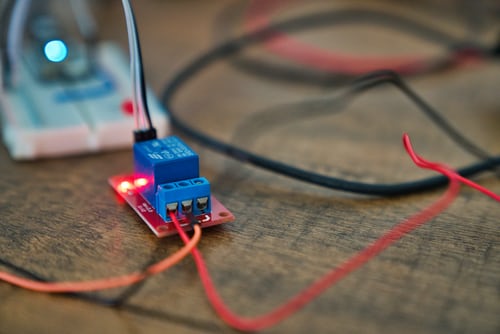Selection of Electromagnetic Relays
Understand the necessary conditions
① The power supply voltage of the control circuit, the maximum current that can be provided;
②The voltage and current in the controlled circuit;
③How many groups and what form of contacts does the controlled circuit need? When choosing a relay, the power supply voltage of the general control circuit can be used as the basis for selection. The control circuit should provide enough working current to the relay, otherwise, the relay pull-in is unstable.
Check the information
After consulting the relevant information to determine the conditions of use, you can search for the relevant information to find out the model and specification number of the relay you need. If you have a relay on hand, you can check whether it can be used according to the data. Finally, consider whether the size is appropriate.
Pay attention to the volume of the appliance
If it is used for general electrical appliances, in addition to considering the volume of the chassis, the small relay mainly considers the layout of the circuit board. For small electrical appliances, such as toys and remote control devices, ultra-small relay products should be used.
Electromagnetic relay technical parameters
Rated working voltage
It refers to the voltage required by the coil when the relay is working normally. Depending on the model of the relay, it can be either AC voltage or DC voltage.
DC Resistance
It refers to the DC resistance of the coil in the relay, which can be measured by a multimeter.
Pick-up current
It refers to the minimum current that the relay can generate the pull-in action. In normal use, the given current must be slightly larger than the pull-in current, so that the relay can work stably. For the working voltage applied to the coil, generally do not exceed 1.5 times the rated working voltage, otherwise, a large current will be generated and the coil will be burned.
Release current
It refers to the maximum current that the relay produces to release the action. When the current in the pull-in state of the relay is reduced to a certain extent, the relay will return to the unenergized release state. The current at this time is much smaller than the pull-in current.
Contact switching voltage and current
It refers to the voltage and current that the relay is allowed to load. It determines the magnitude of the voltage and current that the relay can control. It cannot exceed this value when using it, otherwise, it is easy to damage the contacts of the relay.
Electromagnetic Relay Application
Electromagnetic relay is an important part of electric bells, telephones, and automatic control circuit devices. Its essence is a switch controlled by electromagnets, and it plays a role similar to a switch in the circuit: (1) Use low voltage and weak current to control high voltage, Strong current; (2) Realize remote manipulation and automatic control.
Using electromagnetic relays, low-voltage, weak-current control circuits can be used to control high-voltage, high-current working circuits, and remote control and production automation can be realized. Electromagnetic relays are widely used in automatic control (such as control circuits in refrigerators, automobiles, elevators, machine tools) and communications.
Learn more about the electromagnetic relay to have a deep insight into it.



No comments yet